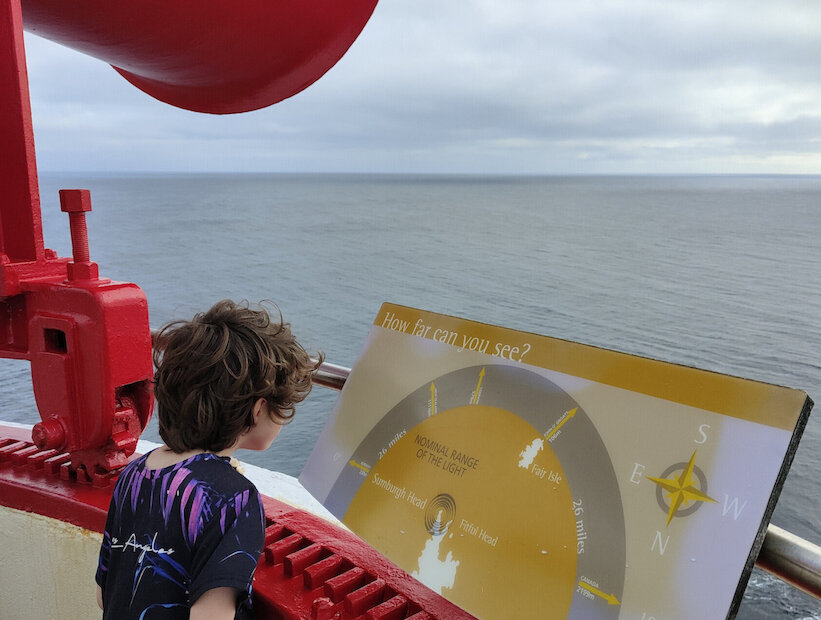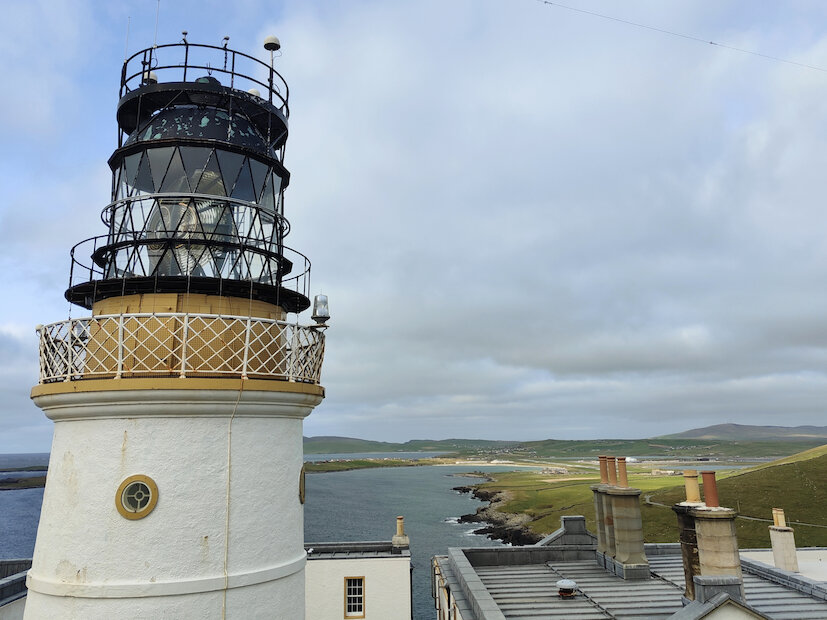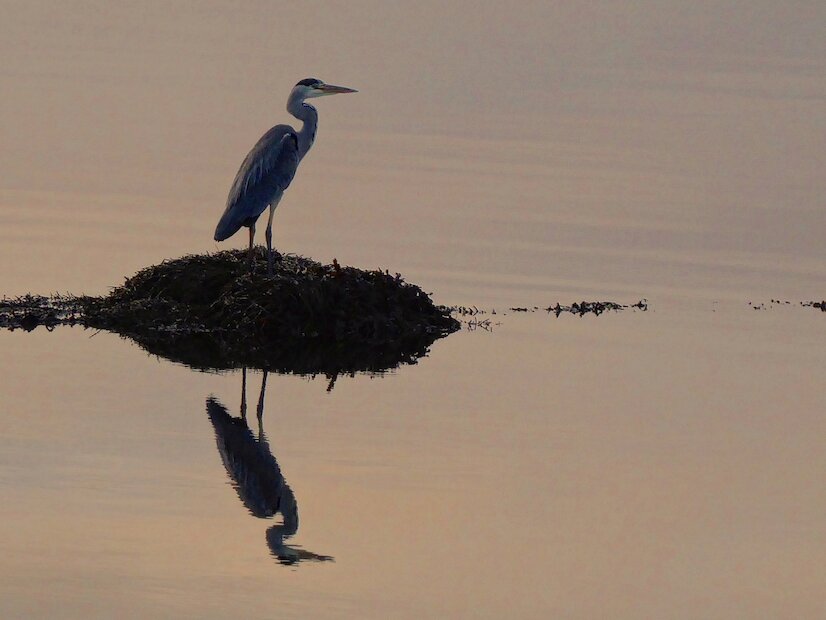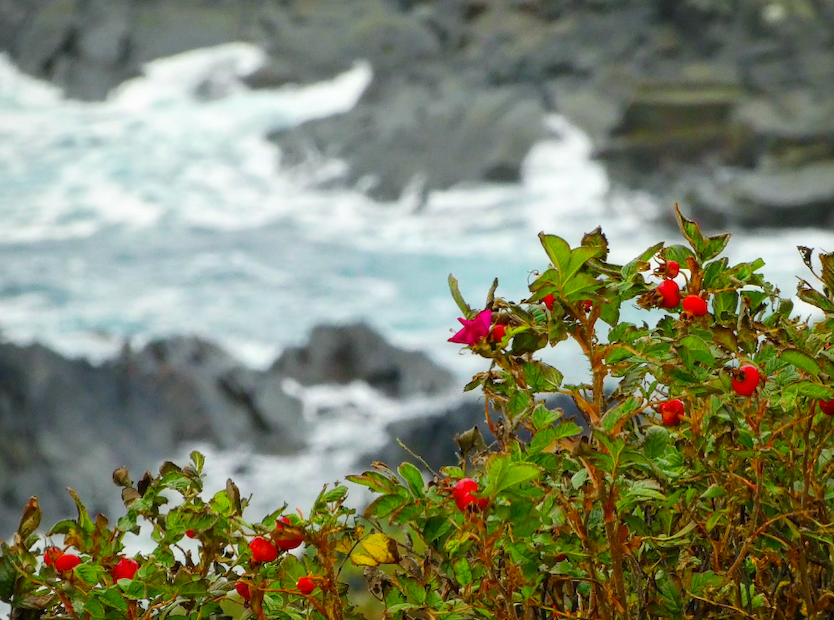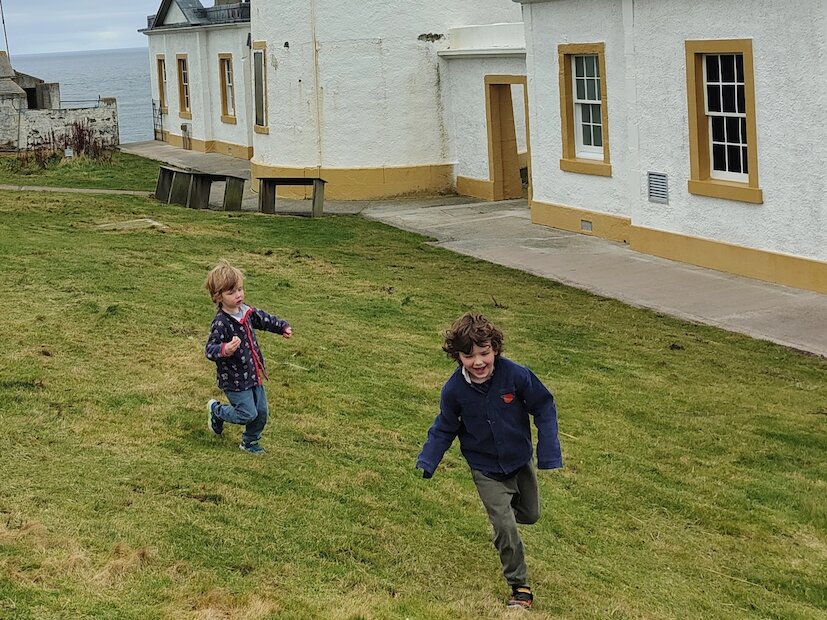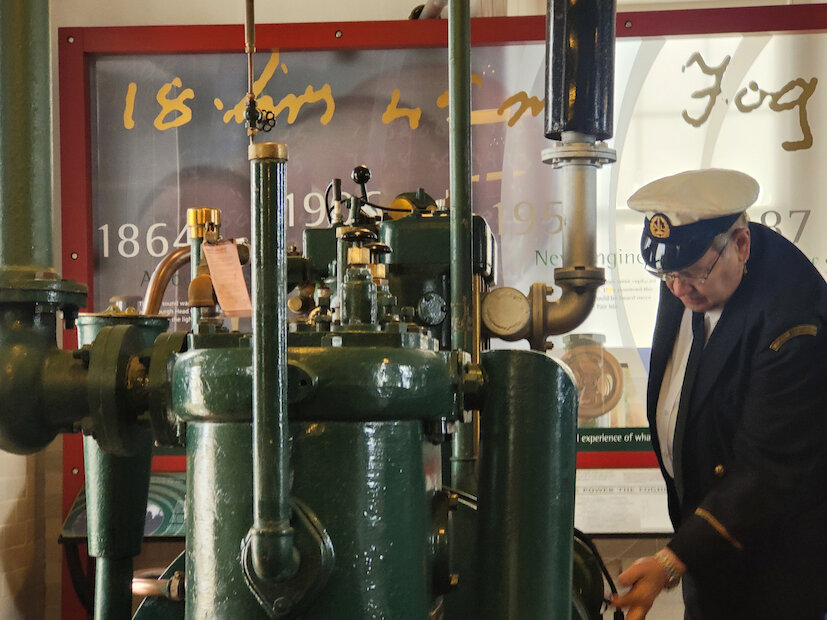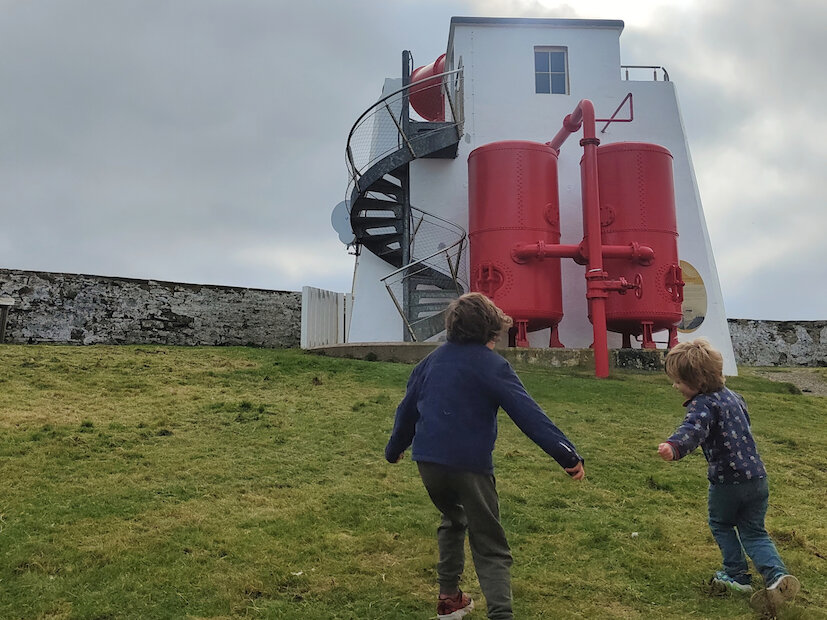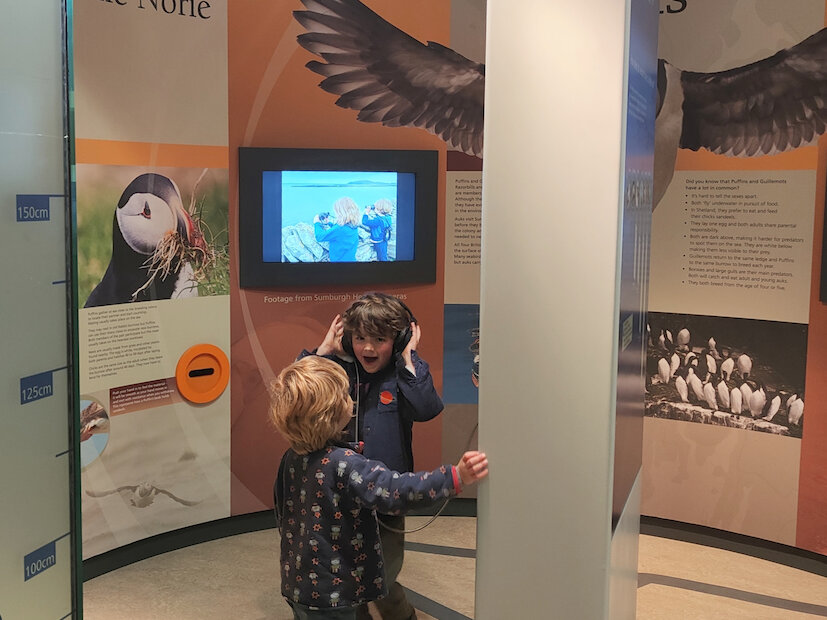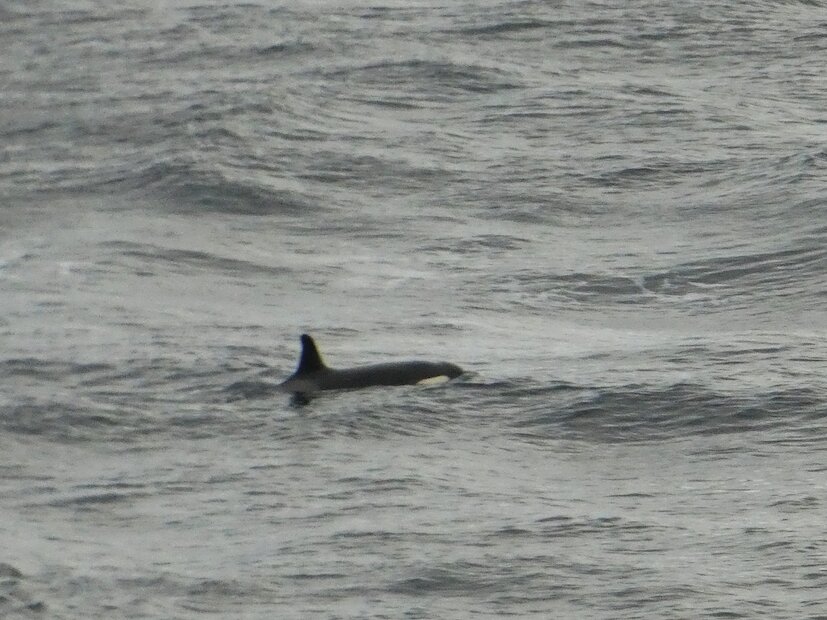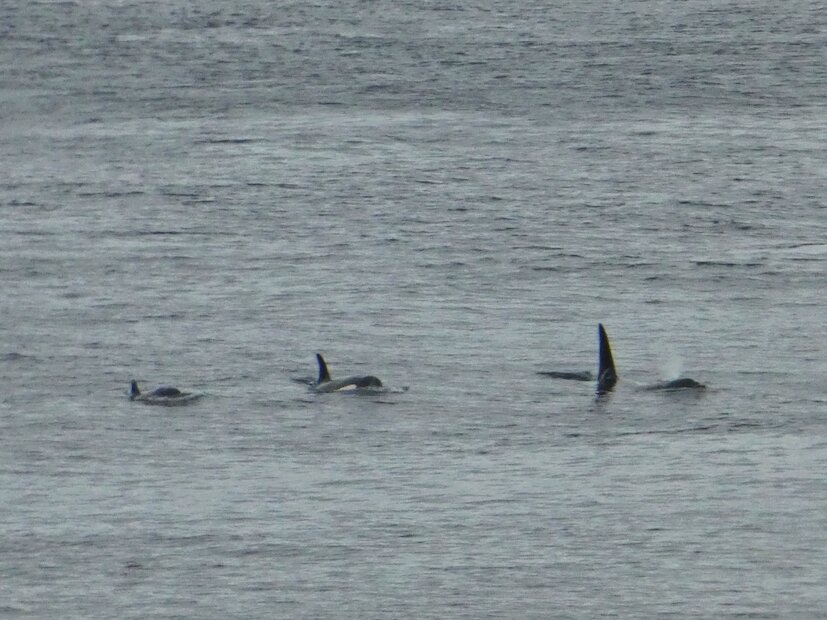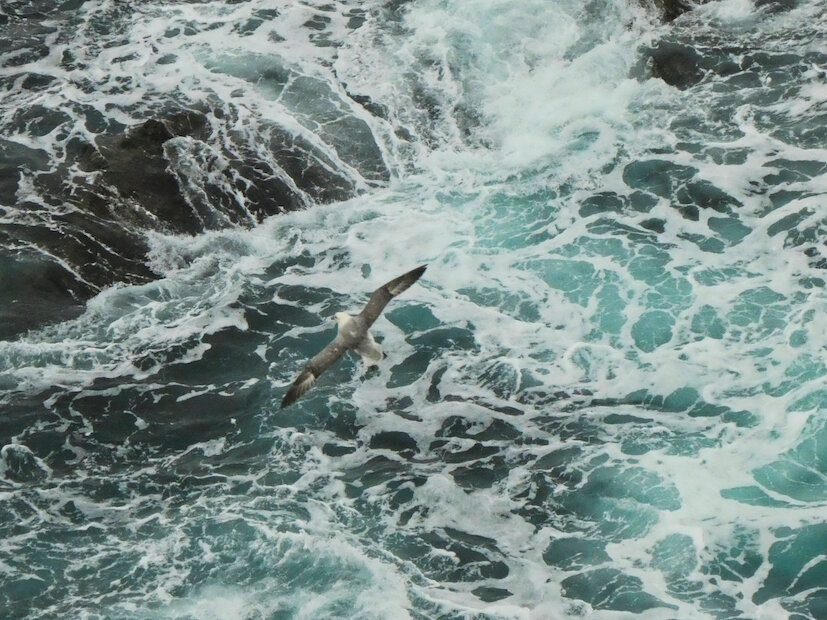Sun shone through opaque clouds, and a strong breeze brought white horses charging towards shore, breaking against cliffs whose jagged forms, bleakly beautiful in their emptiness, were so very different to how they appear in summer when the same stone, circled by calm seas and home to thousands of birds, seems softer. The same landscape, so very different through the seasons.
At midday we waited in the engine room as machines began their noisy awakening. When the dial on the pressure gauge rose higher, we all ran outside to hear the first blast of the horn.
Everyone cheered as the sound, which would once have been a familiar part of the coastal soundscape, filled the air once more. The bairns were delighted, running between engine room and the grass in front of the foghorn. Before long they had joined some others their age in a wild game of catchy.
